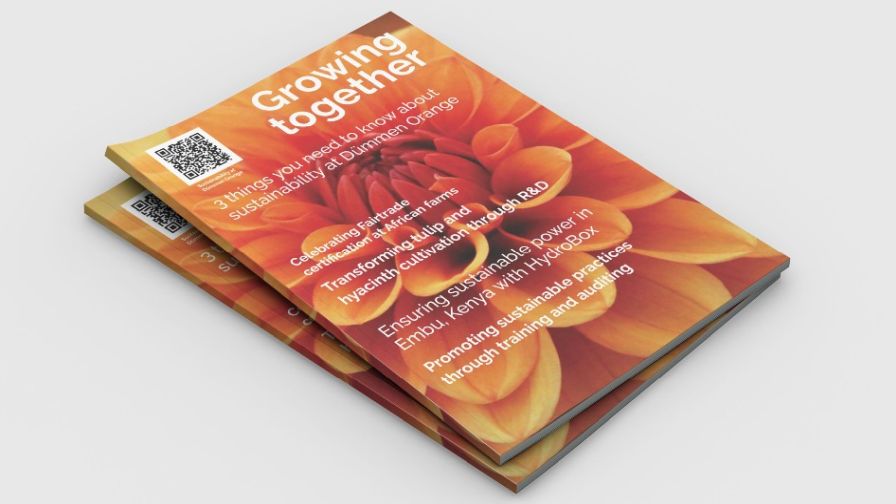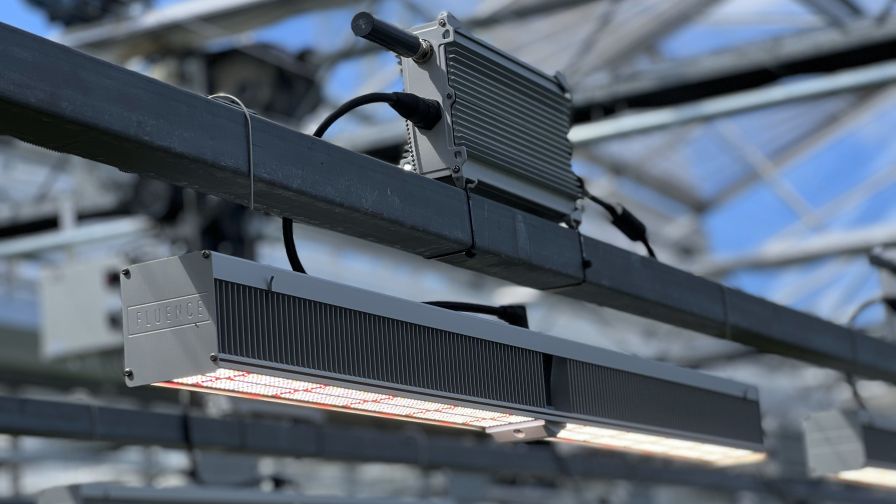Going Lean
The automotive and horticulture industries have a lot in common. Well, they can, anyway. It’s all about streamlining the production process. Toyota is one of the most successful examples of a "lean" company — one that does what the customer wants, and only what the customer wants — in order to reduce waste. The concept is called lean manufacturing, and it’s catching on in the green industry.
"It’s about not overproducing in terms of finished product, but also in terms of daily activities," says Andy Rogish, quality systems manager for Yoder Brothers, Inc., which has implemented lean practices in its greenhouses. "For instance, if I double or triple handle pots in my delivery process, the customer will eventually care, whether they realize it or not, because the more I handle the pots and deliveries, it’s going to require more labor. If I’m touching a pot two or three times, I’m adding no value to the product, it slows down my processes and it requires me to have a longer lead time, so I need more notice form the customer before he wants anything. Those extra costs I incur in labor and in lead time will be passed on to the customer."
What Does Lean Mean?
With lean manufacturing, waste is eliminated and operations become more efficient. Rogish explains that every activity someone does falls into one of two broad categories: waste or value. Value is anything that changes the form, fit or function of the product and the customer is willing to pay for. Everything else is some form of waste. Waste, however, can then be divided into two categories: necessary waste, which is activity that adds no value to a product but can’t be eliminated, and regular waste, which can and should be eliminated.
"Lean is needed in our industry not only to preserve our livelihood but to protect family business core values that make our industry so distinctive in the American landscape," says Rogish. "Most folks in our industry start as a family business, with the family member owner/operator in the driver’s seat. As businesses grow beyond the ability of one owner/operator to manage, he starts to fade into the background and he’s been replaced with a corporate culture. An unfortunate aspect of a corporate culture is that it builds functional silos. You get pockets of expertise that are an inch wide and a mile deep. Everybody knows a lot about their jobs, but not about the glue that holds their functions together and makes them act as a unified whole, and that’s where lean comes in. It has the ability to reach across those functional silos and create a structured, integrated team approach to solving problems like price pressure and margin management."
Doing More With Less
Gary Cortes, a partner in FlowVision, a consulting company that focuses on lean manufacturing and supply chain, says one of the best things about lean implementation is that it requires minimal investment. FlowVision’s goal is to keep costs down as much as possible.
"We don’t look at investing in new software or new equipment — we try to do with what they have," Cortes says. "In everything we do, we focus on minimal capital investment and minimal automation, because a lot of times, you have to be high volume to be able to justify automation. There are a lot of mom and pop type nurseries out there that could spend hundreds of thousands of dollars on automation equipment that can produce a lot more than what they’ll ever be able to sell. That really doesn’t make sense."
Lean manufacturing can mean doing more with less, gaining stability in processes, improving quality, increasing production capacity and developing the ability to be more responsive to the voice of the customer, according to Rogish. "One of our pack processes once took 15 people eight hours to pack 840 boxes. Anything over 840 was handled by extra manpower, overtime and inventory builds in the form of partial boxes packed," he says. "After a lean improvement effort known as a Kaizen, we went from a grocery store-style pack system to a pack cell, and now the same 15 people can do 1,300 boxes in a day."
By removing waste from the equation, surprises were eliminated, and the right products made it to the right shipping events more easily, reducing the frustration of employees, adds Rogish. In the grocery store system, inventory would be laid out on a couple shelves. New inventory would be laid out a few days later on more shelves and the newest inventory would be laid on even more shelves. The new system has turned the grocery store-style shelves into a horseshoe-shaped cell, and the right inventory for the right shipping event is loaded onto the shelves. Instead of searching multiple inventories, employees now need to go only one place to find the variety they’re looking for.
Open To Change
One specific operation FlowVision has worked with is D.S. Cole Growers in Louden, N.H. FlowVision visited owner Doug Cole to help him with shipping processes and packing.
"The bigger project turned out to be on the systems side where they were having issues," says Cortes. "When they would pack orders, everything was manual, and at the end of the day, they were always short a tray or two of a particular variety."
To remedy the problem, Cortes worked with Cole and a software system to come up with some enhancements to their existing software that would allow for a barcode system to be used. Now, a master pull sheet is created that identifies which trays need to be pulled, and as they pull trays from the greenhouses, they scan them. As the trays are pulled, they’re put into an inventory location. The system will indicate which orders are ready to pack. This helps the shipping supervisor know which orders to work on first.
"We are operating on more of a ‘just in time’ mentality," says Cole. "Before, we would have crews make boxes the week before we shipped. This took up too much space, and the box makers had no incentive to move quickly. Now we flow our packing crew within the area so that everyone is very efficient."
Cole also says they’ve now delegated more responsibility, making more employees accountable for product quality. He notes, though, that employees have to be open to change.
"Lean flow will only work if employees are willing to listen and try what is suggested," he says. "Some recommendations may not work, but you need to be willing to try them to see what will and what won’t."
Rogish thinks lean will have tremendous effects on the green industry in the future. Specifically, he expects to see new opportunities in the supply chain.










